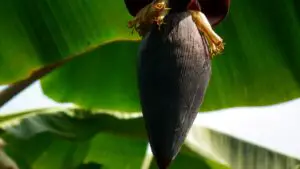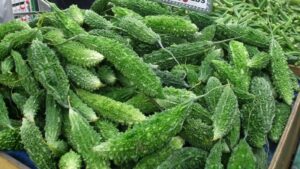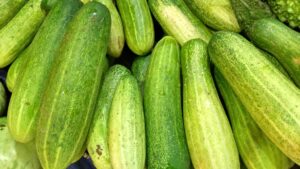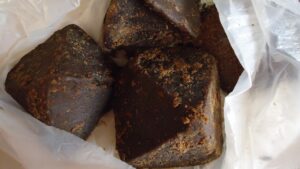Bottle Gourd is the English name of what we call ‘Lau’ in Bengali and ‘Lauki’ in Hindi. There are other pet names of bottle gourd in English, such as, Calabash, Long Melon, Birdhouse Gourd, White Flower Gourd, Milky Gourd etc.
This vegetable features an oval shape and looks like a dumbbell or bottle and thus, has got its name bottle gourd.
Bottle Gourd is a popular vegetable in India. You will be surprised to know that it is believed to be one of the earliest domesticated plants.
It might taste bland and boring but there are some interesting recipes that can be prepared with bottle gourd.
This vegetable has long been considered a powerhouse of health-promoting nutrients including vitamin B and C.
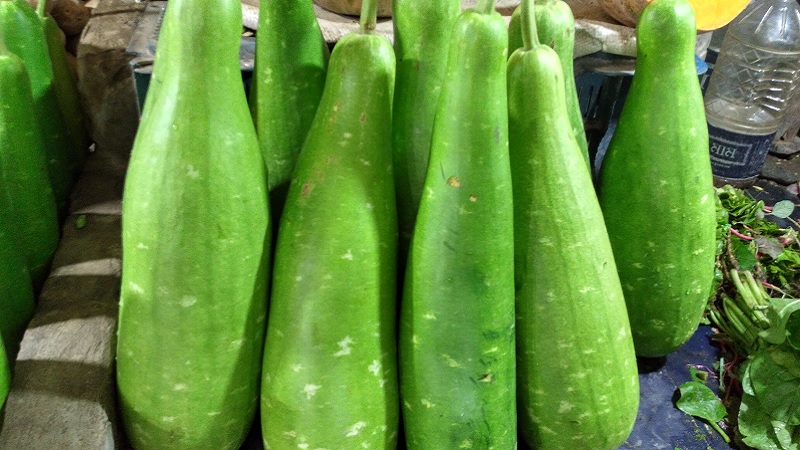
Uses of Bottle Gourd in Bengali & Indian Cooking
The taste of raw bottle gourd is repelling enough for foodies not to give it any space on their platter. But then, it is a superficial judgment.
“Don’t judge a book by its cover”, you have surely heard this proverb. It goes so well for bottle gourd.
Fries
Let us start with lauer khosa bhaja. In English, it means bottle gourd peels fries. These peels are properly washed, mixed with some salt and turmeric powder and stir fried.
For added taste, you can sprinkle poppy seeds all over. Serve it with plain hot rice or roti. You will hardly find words to express how great the simple pairing goes.
Breakfast
Handvo is an interesting way to incorporate bottle gourd in cooking. It is a traditional savoury Gujrati cake prepared with a combo of rice, lentils, buttermilk, bottle gourd, spices and herbs.
Lauki dosa is an innovative spin to traditional dosa recipe. It is super tasty and good for those on a weight loss mission. This quick-to-make dish packs several nutritional benefits to keep you in good health.
Dal
Have you ever tried bottle gourd pieces cooked in chana dal? It is a classic dish prepared across North India. What starts with a fair of flavours becomes a healthy affair for foodies.
Curries
The bongs do a creative culinary feast with this vegetable. This seemingly cute and calm vegetable makes for an authentic Bengali delicacy known by ‘bori diye lauer jhol”.
Bori means lentil dumplings. Medium chunks of bottle gourd are used for cooking. Some Bengalis keep it super simple and don’t add turmeric powder.
But others prefer a mildly spicy avatar. Hence, it is up to you what to do with it. It is a super comforting dish in summer time. You can pair it with hot rice or roti. I do think roti would be a preferred partner with this soupy dish.
Lauer ghanto is another palate-flattering traditional cuisine from the Bongs’ cookbook. Usually bori is added for crunchy bites dense with flavours of gravy.
Finely grated bottle gourd is cooked with some common spices but their flavours are not overpowering.
A little bit of milk and sugar are added at the end of cooking to counterbalance the mild bitterness of bottle gourd. It is a tight gravy that works well with both rice and roti.
Lauki ki yakhni is an interesting twist to regular lauki ki sabji. When done the Kashmiri way, it becomes a delicious kahani of a few spices and fennel flavouring curd.
The semi-thick delight is decorated with a few sprinkles of coriander leaves.
Ghiya malaiwala is a no-fussy, no-compromise-with-taste recipe. A dollop of cream amplifies the desi flavours in an interesting way.
A generous and glamorous topping of cream and chillies will make it more teasing and an instant hit on your dining table.
Stuffed lauki is a luscious dish dense with nutritional benefits. The full-of-flavours is a pure and presentable delight on your lunch platter.
Blanched lauki lovingly marinated in lime juice and stuffed with paneer are baked to perfection. Relish it as is or with chapati; lauki at its versatile best will never fail to frustrate your taste buds.
Lau chingri is a celebration of flavour swap between bottle gourd and prawns. It is a very Bengali style of cooking that seeks to manage an otherwise unthinkable pairing of vegetable and non-veg items.
It does great both with and without lentil dumplings. Medium sized prawns are sautéed and added to the curry and allowed to cook with grated bottle gourd. You can enjoy it with rice and dal or with roti.
Lauer kofta or ghiya ki kofta is a delicious dish that you can serve on a lazy weekend or during any special occasion.
Medium-sized dumplings are made of bottle gourd and lazily cooked in aromatic gravy. The spice-loaded recipe will leave you licking your fingers.
Lauki musallam, the rich, spicy gravy, is a feast of aromatic and colourful spices as well as goodness of dry fruits. Rice or chapati – it goes well with either of them.
Deserts
Lauer payesh or dudhi ka halwa is a treat for your sweet teeth. The dish offers a tantalizing texture with exciting flavours. Grated bottle gourd is slow cooked in milk flavoured by cardamom powder. Lots of dry fruits perk up the look and taste as well.
Lauki ki dalna, unlike dimer dalna, is a unique sweet treat cooked with aromatic spices and herbs. A dash of sugar and milk bring the subtlety in taste and softness in texture.
The name of the recipe – Badam lauki ki launj – drops a hint about its taste. The trio, milk, bottle gourd and badam, engage in a playful swap of flavours, which makes the desert a delightful treat for all.
Questions & Answers:
How Long Does a Bottle Gourd Take to Cook?
Fresh bottle gourd is very soft and so does not take more than a quarter of an hour to get cooked.
How Does Bottle Gourd Taste?
Raw bottle gourd offers a mildly bitter taste.
How Do You Prepare Gourds for Eating?
Bottle gourd needs no special preparation. Just peel off its skin and cut it into small pieces or grate the vegetable.
What is Bottle Gourd Called in Different Languages?
Bottle gourd is called lau in Bengali, lauki or dudhi in Hindi, huzi in Chinese and cucuzza in Italy.



